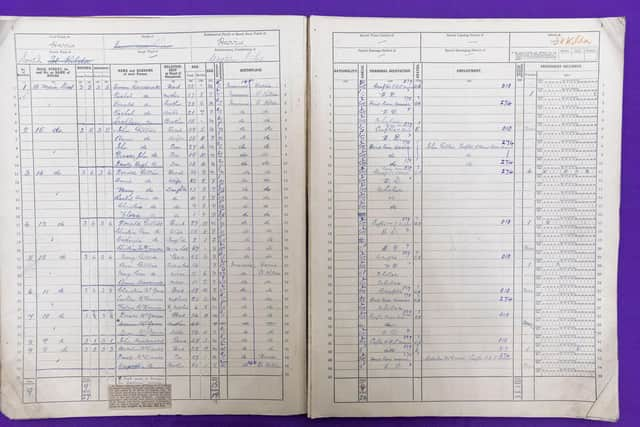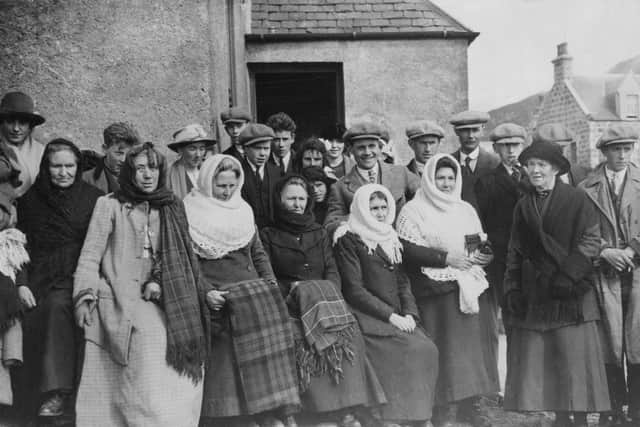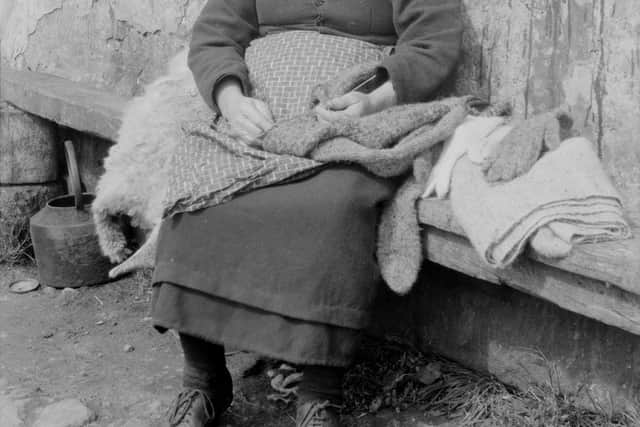The last count on St Kilda as census captures island life for final time
The 1921 Census, which has now been published online, has illuminated those who hung on to island life in the years before it was abandoned in 1930 as well as the tragedies and losses that marked the years in between.
Dr. James Craufurd Dunlop, Registrar General for Scotland, personally made the trip to St Kilda in June 1921 to ensure the people of the archipelago, which sits around 50 miles west of its nearest neighbour in the Outer Hebrides, were fully recorded. He arrived on the warship HMS Mistley, which had been specially deployed for the mission.
Advertisement
Hide AdAdvertisement
Hide AdA newspaper report of the day said: “I understand the Registrar General in person had made a trip on one of the HM Ships to St Kilda for the purpose of taking the census of the inhabitants. Few will grudge this official taking a pleasant hot-weather outing in connection with his otherwise dry job. At the last census, St Kilda was shown to contain 80 people.”


That year, islanders faced an epidemic of whooping cough – thought to have been brought on to the island by two visitors who arrived by tourist ship – that infected half the island. A failed seabird collecting season, due to stormy weather, was also endured.
Another notable event included the delivery of a gramaphone, gifted by the Lord Provost of Glasgow, and a collection of Harry Lauder records. It was delivered to the island by its nurse as she returned from her annual holiday to the city.
The nurse was one of two St Kilda residents – the other being the minister - who did not list either crofting, hand loom weaving or home duties as their occupation.
Dr Dunlop found 73 people living on the island on census day of 19 June 1921 with the records capturing a turning point in the island’s story. Over the following nine years, the population halved with just 36 people left when it was abandoned in August 1930.


Original enumeration books show 74 islanders were counted at first with one name later scored out. Marion McQueen, 65, the third wife of Donald McQueen, of 10 Main Street, Hirta, died of heart failure before the census results were collated.
Her son Donald, who was 34 at the time of the census, left St Kilda around five years later and moved to Clydebank. By 1930, the family home was empty.
At Number 14, the Gillies family were found. Donald, 36, a crofter and hand loom weaver lived with his wife Annie, 32, and daughters Mary, 13; Rachel, 10; Christina, 7 and Flora, 1.
Advertisement
Hide AdAdvertisement
Hide AdDonald died that year, with Christina dying in 1925 and Mary succumbing to a form of TB in July 1930, just days before St Kilda was evacuated. Annie Gillies left the island with her surviving daughters, Rachel and Flora.


Next door at Number 15, another Annie Gillies lived with her husband and three sons. By the time she left the island, she was widowed with just one boy remaining.
In 1921, islanders lived across 17 households but by 1930, only 10 were lived in. Following the evacuation, islanders relocated mainly to Morvern, Ross-shire and Fife with 1,500 sheep also moved.
Comments
Want to join the conversation? Please or to comment on this article.